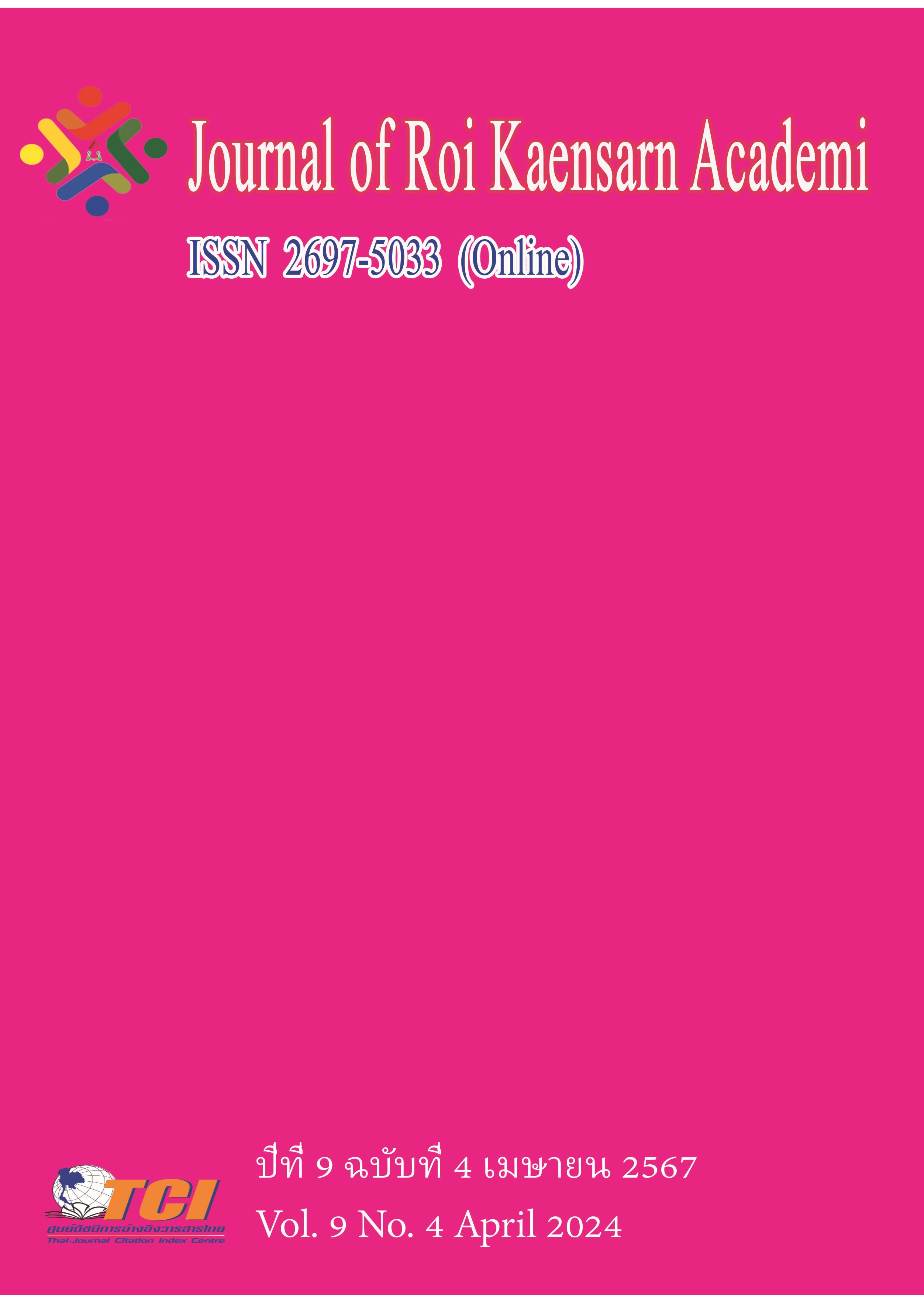การสร้างแรงบันดาลใจด้วยกระบวนการทางศิลปะ เพื่อขับเคลื่อนแนวคิดของเด็กปฐมวัย
Main Article Content
บทคัดย่อ
การวิจัยมีวัตถุประสงค์ดังนี้ 1) ศึกษาการสร้างสรรค์ผลงานศิลปะเพื่อส่งเสริมจินตนาการและสร้างแรงบันดาลใจให้กับเด็กช่วงปฐมวัย 2) วิเคราะห์และประเมินแนวคิดการนำศิลปะขับเคลื่อนแรงบันดาลใจต่อผู้ปกครองของเด็กปฐมวัยและครูผู้สอนเด็กปฐมวัย 3) สรุปองค์ความรู้กระบวนการสร้างผลงานศิลปะเพื่อส่งเสริมจินตนาการให้กับเด็กช่วงปฐมวัย งานวิจัยนี้เป็นการวิจัยเชิงคุณภาพโดยกลุ่มผู้ให้ข้อมูลคือ 1.เด็กปฐมวัยอายุ 5 ขวบ เป็นผู้ร่วมสร้างสรรค์ผลงานศิลปะ 2.กลุ่มผู้ทรงคุณวุฒิ 3 คน ประเมินผลงานศิลปะ และ 3.กลุ่มผู้ปกครองและครูผู้สอนที่ชมผลงานศิลปะ จำนวน 33 คน เครื่องมือที่ใช้คือแบบสอบถามประเมินแนวคิดการนำศิลปะขับเคลื่อนแรงบันดาลใจ ทั้งนี้ผู้วิจัยวิเคราะห์ข้อมูลโดยใช้ร้อยละ ค่าเฉลี่ย ส่วนเบี่ยงเบนมาตรฐาน และวิเคราะห์ข้อมูลเชิงคุณภาพจากแบบสอบถามปลายเปิด
ผลการวิจัยพบว่า 1) ผลงานศิลปะที่ส่งเสริมจินตนาการและสร้างแรงบันดาลใจให้กับเด็กช่วงปฐมวัย ประกอบด้วย ภาพตามจินตนาการและแรงบันดาลใจจากตัวละครการ์ตูนสู่การสร้างตัวละครใหม่ ผลงานการปั้นดินน้ำมันจากภาพวาด การถ่ายทอดเรื่องราวแรงบันดาลใจของครอบครัว และการแสดงงานศิลปะโครงการ International Art, Design and Architecture Exhibition 2021 ชื่อ My Family Inspiration 2) วิเคราะห์และประเมินแนวคิดการนำศิลปะขับเคลื่อนแรงบันดาลใจ พบว่าผลงานศิลปะสามารถสร้าง แรงบันดาลใจต่อผู้ชมและสามารถนำกระบวนการประยุกต์ใช้กับเด็กปฐมวัยได้จริง และ 3) สรุปองค์ความรู้กระบวนการสร้างผลงานศิลปะส่งเสริมจินตนาการให้กับเด็กปฐมวัย พบว่ากระบวนเริ่มต้นจากแนวคิด 4Ps of Creativity ผสมผสานความรู้และประกอบด้วยขั้นตอนดังนี้ 1.บุคคล 2.กระบวนการสร้างความคิดสร้างสรรค์ 3.สื่อที่สร้างจากสภาพแวดล้อมที่เอื้อต่อความคิดสร้างสรรค์และ 4.ผลิตภัณฑ์ คือนำผลงานนำเสนอหรือจัดแสดง จากนั้นส่งเสริมให้เด็กทำกิจกรรมสร้างสรรค์อยู่เสมอ
Article Details
เอกสารอ้างอิง
ขนิษฐา บุนนาค. (2562). การจัดกิจกรรมศิลปะสร้างสรรค์ สำหรับเด็กปฐมวัย. ออนไลน์. สืบค้นเมื่อ 3
มกราคม 2567. แหล่งที่มา https://www.youngciety.com/article/journal/arts-for-kids.html
ชิชิโร อิเกะซะวะ. (2557). การพัฒนาความคิดสร้างสรรค์ (บัณฑิต ประดิษฐานุวงษ์, ผู้แปล). กรุงเทพมหานคร:
สมาคมส่งเสริมเทคโนโลยี (ไทย-ญี่ปุ่น).
ชลธิชา ปารีเสน. (2561). ศิลปะกับเด็กปฐมวัย Art With Early Childhood. ออนไลน์. สืบค้นเมื่อ 5
มกราคม 2567. แหล่งที่มา https://fliphtml5.com/th/cufq/kyag/basic
ถิรนันท์ อนวัชศิริวงศ์ และพิรุณ อนวัชศิริวงศ์. (2561). MIDL for Kids การรู้เท่าทันสื่อสารสนเทศและ
ดิจิทัลสำหรับเด็กปฐมวัย. กรุงเทพมหานคร: สุพีเรียพริ้นติ้งเฮ้าส์.
นำชัย ชีววิวรรธน์. (2565). สร้างแรงจูงใจทางบวก กระตุ้นศักยภาพการเรียนรู้ให้เด็กเอาตัวรอดได้ใน
สิ่งแวดล้อมที่ยากจะคาดเดา. ออนไลน์. สืบค้นเมื่อ 6 มกราคม 2567. แหล่งที่มา
https://thepotential.org/knowledge/learning-incentives/
นภัสวรรณ ไทยานันท์. (2561). ความคิดสร้างสรรค์คืออะไร. ออนไลน์. สืบค้นเมื่อ 15 ธันวาคม 2566.
แหล่งที่มา https://www.ftpi.or.th/2015/513
พีรณัฐ พินวิเศษ. (2560). ก่อนที่จินตนาการจะสำคัญกว่าความรู้.ออนไลน์. สืบค้นเมื่อ 3 มกราคม 2567.
แหล่งที่มา http://natpinvises.com/blog/2017/before-imagination-important-than-know ledge
มาเรียม นิลพันธุ์. (2558). วิธีวิจัยทางการศึกษา. (พิมพ์ครั้งที่ 9) .นครปฐม: ศูนย์วิจัยและพัฒนาทาง
การศึกษาคณะศึกษาศาสตร์ มหาวิทยาลัยศิลปากร.
ยะซึมิ คะสึโอะ. (2563). คู่มือดูแลเด็ก 3-5 ปี ตามพัฒนาการ (นงนุช เอี่ยมกระสินธุ์, ผู้แปล). กรุงเทพมหานคร:
นานมีบุ๊คส์.
ยุพิน พลหนา. (2567). อย่าปล่อยให้สื่อดิจิทัลเป็นประตูสู่การต่อต้านสังคม. ออนไลน์. สืบค้นเมื่อ 10
มกราคม 2567. แหล่งที่มา https://www.edbathai.com/Main2/สาระ-การศึกษา/157-สาระ-
การศึกษา-2-2024-2567/901-อย่าปล่อยให้สื่อดิจิทัลเป็นประตูสู่การต่อต้านสังคม
สุภาพรรณ วงศ์ศักดิ์ศิริกุล และโสมฉาย บุญญานันต์. (2567). การพัฒนากิจกรรมศิลปะบนฐานทางเลือก
เพื่อส่งเสริมการสร้างสรรค์ศิลปะสำหรับ เด็กอายุ 9-12 ปี. วารสารวิจยวิชาการ. 7 (1), 85-99.
สุริยเดว ทรีปาตี. (2562). เด็กไม่ใช่ผ้าขาวอย่าเข้าใจผิด. กรุงเทพมหานคร: แพรวเพื่อนเด็ก. CIMB THAI. (2566). 7 วิธีสร้างแรงบันดาลใจในชีวิต เคล็ดลับสู่ความสุขที่ไม่มีที่สิ้นสุด. ออนไลน์.
สืบค้นเมื่อ 6 มกราคม 2567. แหล่งที่มา https://www.cimbthai.com/th/personal/ blog/lifestyle-tips/7inspiration.html
Greedisgoods. (2561). Likert Scale คืออะไร มาตรวัดของลิเคิร์ท. ออนไลน์. สืบค้นเมื่อ 20 ธันวาคม
แหล่งที่มา: https://greedisgoods.com/likert-scale-คือ
Asmawati, L. (2017). Improving early childhood creativity through integrated learning
based on multiple intelligences. JPUD - Jurnal Pendidikan Usia Dini. 11 (1), 145–
Einstein, A. (1995). Ideas And Opinions. Crown Publishing Group.
Mark A. Runco. (2022). Positive Creativity and the Intentions, Discretion, Problem
Finding, and Divergent Thinking That Support It Can Be Encouraged in the
Classroom. online. Retrieved February 2,2024 from https://www.mdpi.com/2227-
/12/5/340
Rhodes, M. (1961). An analysis of creativity. The Phi Delta Kappan, 42(7), 305-310.
Sadaruddin, et al. (2023). Needs Analysis of Project-based Learning Model Development
in Stimulating Children’s Creativity. European Journal of Education and Pedagogy.
(6), 24-29.
Schwartz, N. H., Click, K., & Bartel, A. N. (2023). Educational psychology: Learning
and instruction. In J. Zumbach, D. A. Bernstein, S. Narciss, & G. Marsico (Eds.),
International handbook of psychology learning and teaching. Cham: Springer, 357–390

